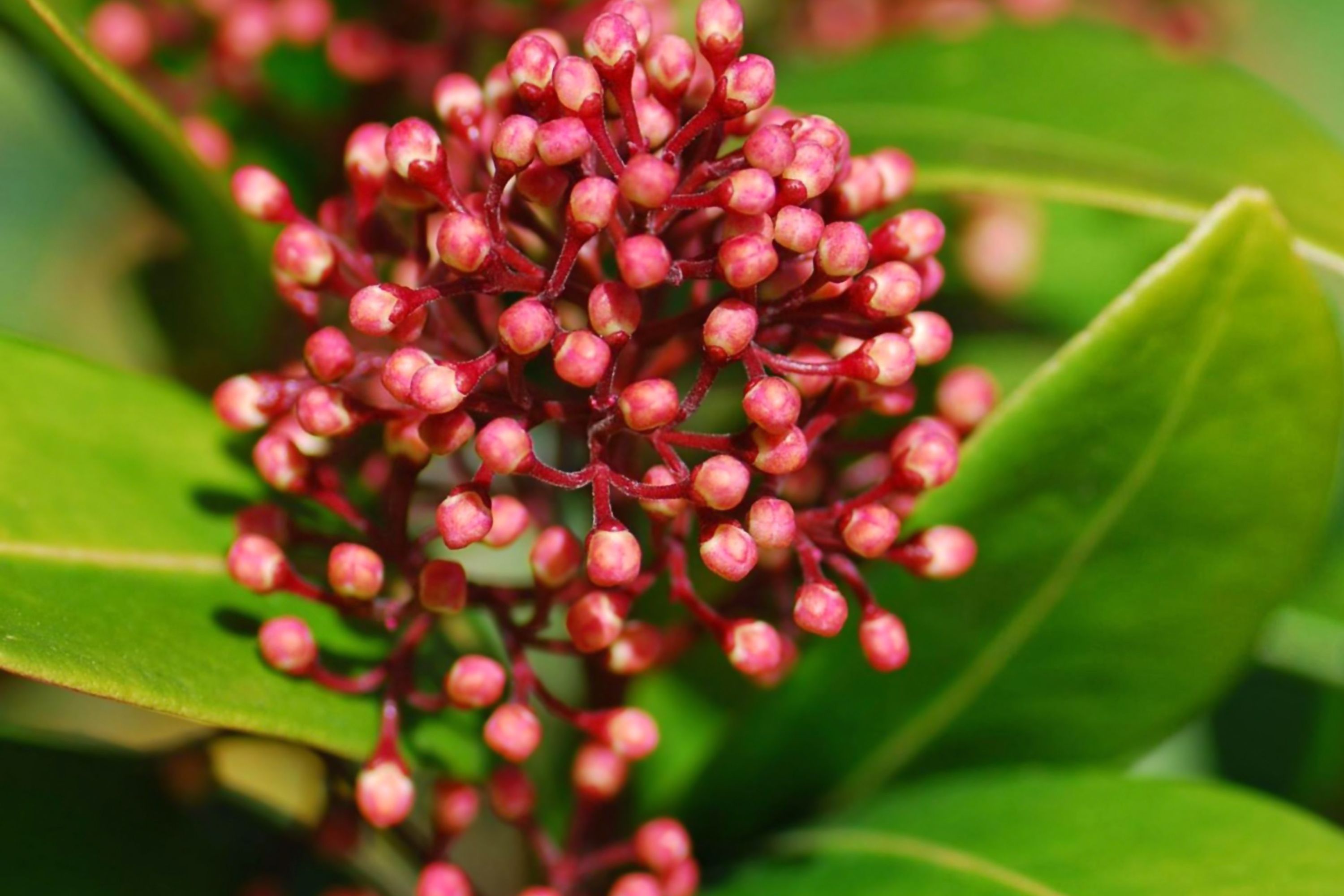Japanese Skimmia
(Skimmia japonica)

Description
Skimmia japonica is a beautiful evergreen shrub that is known for its stunning clusters of fragrant, white or pink-tinted flowers that bloom in the winter months. This plant is native to the woodlands of Japan and China and has been cultivated in gardens for centuries. In this article, we will explore everything you need to know about Skimmia japonica, including its botanical characteristics, cultural requirements, and common uses in landscaping and beyond. Botanical Characteristics Skimmia japonica is a member of the Rutaceae family, which includes citrus fruits, rue, and other ornamental plants. This species is a slow-growing, low-maintenance shrub that typically reaches a height of 1-1.5 meters and a spread of 1-1.5 meters as well. The plant's glossy, leathery leaves are dark green in color and are borne in whorls around the stems. Skimmia japonica is dioecious, meaning that male and female flowers are borne on separate plants. Male flowers are typically more showy, with clusters of tiny, fragrant white or pink flowers that appear in late fall to early winter. Female flowers are smaller and less showy, but they give rise to bright red berries that persist through the winter and provide an attractive contrast against the dark green foliage. Cultural Requirements Skimmia japonica is a relatively easy plant to grow and maintain, making it a popular choice for gardeners of all skill levels. This species is adaptable to a range of soil types, but it prefers well-draining, slightly acidic soils with a pH between 5.0 and 6.5. The plant also prefers partial shade to full shade, although it can tolerate some morning sun in cooler climates. Skimmia japonica is also relatively cold-hardy, tolerating temperatures down to -15 degrees Celsius. When it comes to watering, Skimmia japonica prefers consistently moist soils but can tolerate some drought once established. However, overwatering can lead to root rot and other fungal diseases, so it's important to avoid waterlogged soils. Fertilization is also important for promoting healthy growth and flowering. A balanced, slow-release fertilizer can be applied in spring and summer, following the manufacturer's instructions. Common Uses in Landscaping and Beyond Skimmia japonica is a versatile plant that can be used in a variety of landscaping applications. The plant's evergreen foliage and attractive flowers and berries make it a popular choice for foundation plantings, mixed borders, and woodland gardens. Skimmia japonica can also be grown in containers and used as a focal point on patios or decks. In Japan, the plant is also used in traditional New Year's decorations, where its red berries are seen as a symbol of good luck and prosperity. Beyond its ornamental uses, Skimmia japonica also has some practical applications. The plant's leaves and stems contain essential oils that are used in the production of perfumes and cosmetics. In traditional Chinese medicine, Skimmia japonica is also used to treat a variety of ailments, including rheumatism, arthritis, and gynecological disorders. In conclusion, Skimmia japonica is a beautiful, low-maintenance shrub that can add a festive flair to any garden. Whether you're looking to add some winter interest to your landscape or you're interested in the plant's practical applications, Skimmia japonica is definitely worth considering. With its adaptability, hardiness, and stunning appearance, it's easy to see why this plant has been a favorite of gardeners for centuries.
Taxonomic tree:







